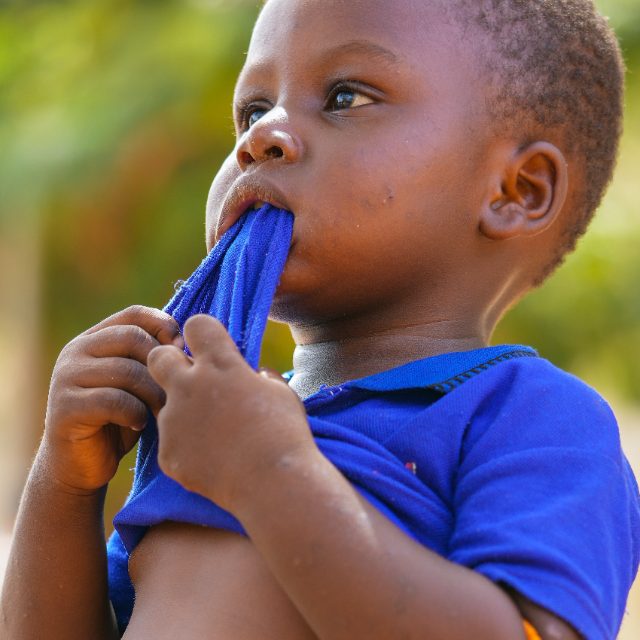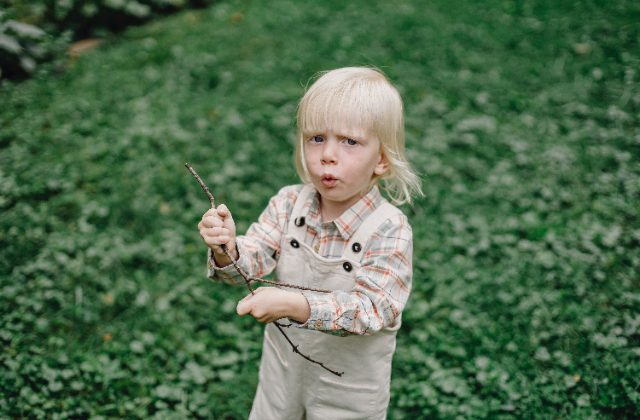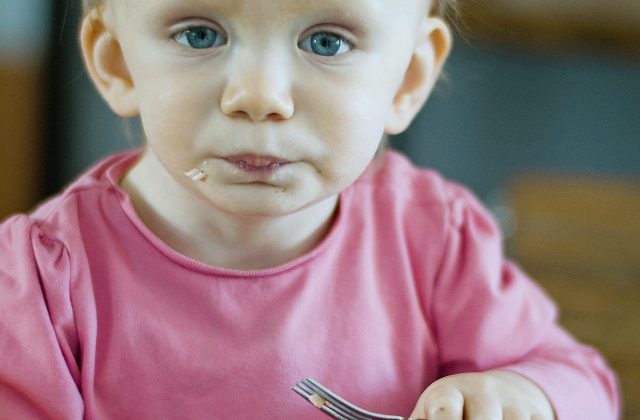
Do you frequently have to remind your toddler to put down his shirt? to remove his fingers or toy from his mouth?
Most infants at the oral stage of their development appear to put everything in their mouths.
Infants usually engage in this when they are trying to understand their environment or are in the teething stage.
However, there is a problem with toddler chewing on shirt.
The disorder of “chewing on things” may be linked to issues with developmental delay or mental health disorders if your child is far past the stage of oral development but still chews on their clothing.
Read more about the reasons behind your toddler chewing on shirt behavior in this article, along with suggestions for breaking the habits.
Why is My Toddler Chewing on Shirt

1. Oral Sensory Seeking
Infants and babies frequently put objects in their mouths due to oral sensory seeking.
This may occur between the ages of 18 and 24 months, but after that, a child’s chewing habit should end.
Your child’s development benefits from oral stimulation. Oral motor desire has its roots in the baby’s most fundamental self-control or calming mechanisms.
A child uses this rooting reflex to satisfy the basic demands of hunger and thirst from infancy to toddlerhood.
Later, infants might turn to that practice of sucking to calm themselves, most frequently through the use of pacifiers and thumb sucking which can lead to toddler chewing on shirt.
2. Delay in Development
Your child may be experiencing delays in his growth and development, which is the main cause of toddler chewing on shirt after 18 to 24 months.
If your child has not reached the necessary developmental milestones at the appropriate ages, they may continue to chew long after they have passed those milestones.
3. Sense of Proprioception
Some children may continue to try to stimulate their mouths and jaws far past the toddler stage. Proprioceptive input is the term used in occupational therapy to describe this.
Children who are looking for self-directed, regular strategies to quiet themselves may find comfort in this intense pressure. Because it is so accessible, a toddler who self-soothes in this way might chew on the shirt.
4. Dental Problems
This can be another explanation for your toddler chewing on shirt.
Many parents have noticed this issue with their children, and it has been observed that the majority of older kids who experience dental problems tend to chew on their shirts or garments.
This might occur particularly if your child has a cavity or while their molars are growing.
These non-verbal signs are crucial to watch out for if your child tends to be shy, or introverted because that’s how they’ll express any oral issues they may be having.
6. Sensory Overload
This may be another factor contributing to your toddler chewing shirt.
When your child has sensory overload, they may chew on objects to completely quiet their nervous system.
This problem is most frequently very common among kids with autism, learning disabilities, or sensory processing issues.
This typically happens when a child is processing too much sensory information from their immediate environment.
As a result, they turn to chewing, which provides the oral sensory seeking they need for self-regulation.
7. Anxiety and Stress
Researchers have also discovered that toddler chewing on shirt may have stress and anxiety disorders as a primary cause.
Children experience stress on an entirely different level than adults do.
They may experience anxiety attacks in response to damaged toys or arguments with friends, especially if their capacity for rational thought is less developed.
When this happens, they begin chewing on shirts or other clothing as a release for their tension.
8. Boredom and Adaptation
Children’s responses to boredom vary because they are not yet fully developed. For instance, they might begin chewing only out of boredom.
Due to your child’s reflex mouth fixation, toddler chewing on shirt may also become a habit. Children occasionally employ their chewing habit as a coping strategy for their lack of concentration.
This is why it has been seen that some kids will start putting the cuff or neckline of their clothing into their mouths when they need to concentrate hard on something.
How To Stop Toddler Chewing On Shirt Habit

You can decide that it’s not a huge concern that your child chews or sucks on their shirt because it’s just a phase.
However, there are ways to support toddler chewing on shirt if it is upsetting them or having a detrimental influence on their everyday lives.
1. Talk it Over With Your Child
You don’t want to embarrass your child for his actions or make him feel guilty for trashing his clothes.
A child may internalize that and believe that they are a nasty person who is careless with their belongings.
However, you don’t want your kids to internalize that in their conception of themselves.
Instead, try a soft, exploratory approach as an alternative.
“I’ve seen that you occasionally chew on your shirt, you can say. What motivates you, in your opinion? What exactly does it aid you with?
When you bring up a conversation about the habit, kids who were previously unaware of it might start to notice it more.
Ask your child if they feel comfortable chewing on their shirt in front of their peers if they are aware that they are doing so.
You could ask your child’s teacher or other caretakers if they notice any patterns or if any teasing is going on.
This will enable you to determine whether toddler chewing on shirt is affecting your child’s social life.
2. Identify Triggers and Patterns
If you pay close attention, you can spot some triggers or trends in toddler chewing on shirt. When do they, for instance, chew on their shirt? Do they perform it before snacks or only when they are starving?
Do they begin chewing while paying close attention to their homework? Or does it occur the day before or right before a social event?
Knowing the events that cause your child to chew will help you calm him down and assist him in breaking the habit. If your child begins to chew before eating, you should have some nutritious snacks waiting for him.
You can address both the concentration and nerve triggers by employing various stress management techniques, such as belly breathing, if this occurs while doing puzzles or before social engagement.
3. Utilize Alternatives
You should give your child products or materials that are made especially for these kinds of situations if they are chewing on objects or pieces of clothes to acquire oral stimulation.
You can use the aid of sensory chew toys which are not harmful to chew, some of which have objects that resemble beads or teeth.
Also, You can give your toddler paintbrushes or other hand-occupying items like fidget spinners to keep his hands busy.
It has been observed that children frequently forget to put objects in their mouths while their hands are busy or otherwise occupied.
As a result, a fidgety toy might undoubtedly divert your child’s attention from his reflexes so that he is occupied rather than trying to put something in his mouth.
4. Address the Issue With Your Child’s Sensory Input
You can occupy your child with daily tasks that call for movement and physical activity or with heavy work of some kind.
By doing this, you can lessen your kids’ sensory input and support their development of self-regulation so they can manage their fixations and reflexes.
5. Providing Chewy Food
You could recommend to your child these alternatives to settle their tensions when they are feeling the want to eat something, whether it be chewing gum, dry fruits, or chewy flapjacks.
However, you must exercise caution and keep in mind your child’s dietary needs in this situation. Consider your child’s allergies if any and avoid giving him that specific food item to avoid hurting your child’s health.
You may pack chewables in your child’s lunch or give him chewables to use when he needs to relax. Foods might consist of:
- Dried food; mango, apples, papayas, pineapples, and little bananas.
- Soft granola bars
- Tender flapjacks
- Liquorice
6. Enable Movement
Whole-body exercise can improve control in some kids and lessen your toddler chewing on shirt habits.
Soft play is an excellent choice. If you can build up an obstacle course with tunnels to go through and cushions and make your child crawl over, crawling can be beneficial.
Linear swinging can be a fantastic method to add movement. Going backward and forward in a linear fashion contrasts with rotating continuously. Swings seen in gardens and playgrounds are excellent.
This input can also be given by straight slides. Children who are sedentary in particular can benefit from movement. Highly sensitive children may not always benefit from it because it could make them more aroused.
7. Breathing Exercise
More research has shown how breathing exercises can help to calm and organize a toddler’s nervous system and mind.
There are some great kid-friendly guided breathing meditation tools such as the Headspace app’s premium version and the Smiling Minds.
Also, a product called Mindful Monsters, which combines breathing exercises and relaxation techniques made specifically for kids, was released by the charity scope.
Another simple method for encouraging toddlers to breathe deeply is to blow bubbles.
BLO-pens are also a lot of fun and an easy technique to get kids to breathe deeply. Although there are various less expensive options, it is advised you go for the original brand because it has higher quality.
8. Seek the Advice of an Occupational Therapist
The toddler’s brain receives a lot of proprioceptive signals from the act of chewing. It has been shown through studies that the proprioceptive feedback the jaw muscles transmit to a toddler’s brains when chewing helps to keep their thoughts orderly and calms them down.
Therefore, you can speak with your child’s occupational therapists who will address this issue of feedback in your child’s brain if they notice that your toddler is chewing on things much over the legal age limit.
Without having to put anything inside their mouth, the therapy will assist your child in stimulating their jaw and mouth muscles.
When to Worry About Your Toddler Chewing on Shirt
You shouldn’t overlook this behavior as your child gets older just because it is instinctive and strongly ingrained.
By the time they turn three, most children cease putting items in their mouths and engaging in this type of exploration.
However, fourth and fifth graders have grabbed their shirts’ collars and shoved them in their mouths.
A toddler chewing on a shirt habit can occasionally have a harmful effect. Therefore, finding out whether chewing or sucking is providing a safety risk to your child or impeding his capacity to participate in regular activities is the most crucial decision to consider.
You should step in, for instance, if your child’s chewing is causing harm to a school or sports outfit or creating a choking hazard.
If your child has a persistent behavior they struggle to break, like shirt chewing, it’s a good idea to mention it to a doctor as it may indicate anxiety, ADHD, or developmental issues.
Conclusion
Beyond the toddler years, it’s usual for toddlers to go through phases where they suck or chew on clothing.
A child will frequently use it as a technique to get sensory stimulation when they are feeling a bit worried.
Typically, it’s a short-lived phase that only causes a few torn or stretched shirt collars.
But if you ignore dealing with your toddler chewing on shirt behavior, it might have a significant impact on his life as an adult.
Therefore, it is worthwhile to find out why this has become a habit and what effective solutions can be used to stop your toddler from such a habit.
Keep in mind the advice provided in this article to shield your toddler from the effects of chewing on shirts or habits.
Additionally, don’t hesitate to speak with your child’s doctor if you have any concerns.
Leave a Reply
You must be logged in to post a comment.